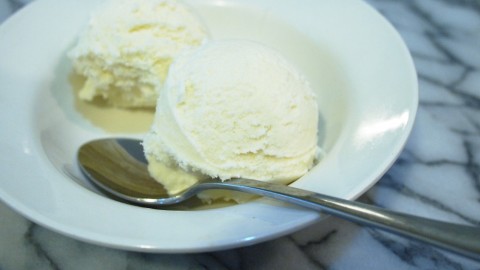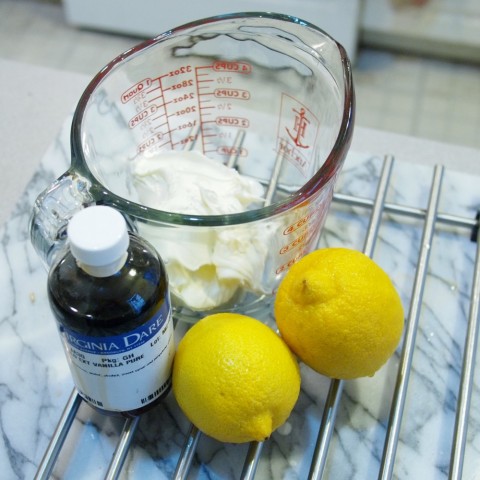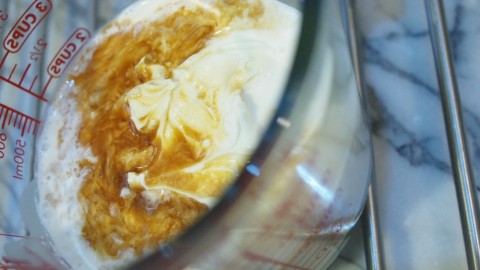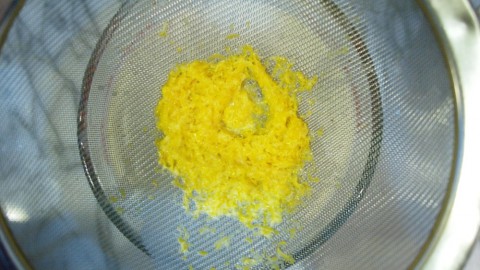It isn’t crazy that this morning — on the first real snowy morning of the new year, with three inches of snow on the ground, having just come in from shoveling the front steps — I churned two batches of ice cream. It’s not crazy at all. Not in the least. I mean it.
The fact of the matter is that I’ve gotten myself involved in this thing — a winter CSA. During the summer, Lancaster Farm Fresh Cooperative — the organization from which we get our CSA — offers an excellent vegetable share. We get greens and eggplant, tomatoes, okra, and all manner of other goodies. It’s all very fresh and very healthful. And I’ve talked about this here before.
But there’s a winter option, too, being offered for the first time this year. And because, obviously, they can’t offer quite the array of green vegetables that they do in the summer — because it’s all, by necessity, onions and potatoes and a scattering of hothouse lettuce — they have to do something to make up the difference. So we had a choice about what else we wanted when we signed up for the CSA. And I chose a quart of raw goat’s milk. Every two weeks.
You begin to get the picture about the ice cream, then. Yes?
A quart of raw milk, whatever its animal of origin, is the sort of thing that needs to get used up pretty quickly when it comes into the house. Because it’s not pasturized, or ultra-pasturized, it doesn’t have the shelf-life of grocery store milk. Even refrigerated, it only lasts a week. Tops. It’s oh, so good — so much richer and subtler than grocery store milk. But there’s no way I can drink it all in such a short span. So a couple of servings end up on top of cereal. And the rest has to be preserved. In this case, in the freezer. As ice cream.
Now, I can imagine some of your reactions already: Goat’s milk ice cream? Uck! But seriously, folks. Don’t knock it until you’ve tried it. Goats aren’t like cows. Their milk is less fatty overall, but what fat it has tends to stay in the milk rather than floating to the top as a layer of cream. Which means that it’s richer when you drink it. Sometimes, it’s almost too rich. But that, precisely, is what makes it perfect for ice cream.
So here’s what I did: I made two flavors — mango (from store-bought juice), and mascarpone cheese. The first one, the Mango, is still a bit of a work in progress. It came out well, but there were some technical issues with my ice cream maker, and I don’t want to share the recipe here until I get them worked out.
The second one, though — the Mascarpone — turned out super tasty. With lemon zest and just a hint of vanilla, it’s got sweet, it’s got tangy, it’s got creamy, and it’s got that peculiar richness that makes cheese in ice cream so very good. I’m not going to say that it’s the best cheese ice cream that I’ve ever had. My friend Linda’s homemade ricotta ice cream, made from homemade ricotta, holds that distinction beyond any doubt. But without any eggs, it’s dead simple to do. And served, perhaps, drizzled with some melted Nutella, it’s not a dessert that you or your guests will soon forget.
8 oz Mascarpone Cheese
2 cups Milk
1 cup Heavy Cream
1/2 cup Granulated Sugar
1 tsp Vanilla Extract
Zest of Two Lemons
In a chilled bowl, combine the cheese, cream, and vanilla, and whisk until the mixture is fairly smooth. Then set aside.
In a saucepan over low heat, combine the milk, sugar, and lemon zest, and allow the mixture to come to a simmer (about 190F), stirring occasionally. This should take about half an hour.
Pour the hot milk through a sieve onto the cold cheese-cream mixture. Mix well with a whisk, chill thoroughly, then pour into your ice-cream maker, and freeze according to the manufacturer’s instructions.




